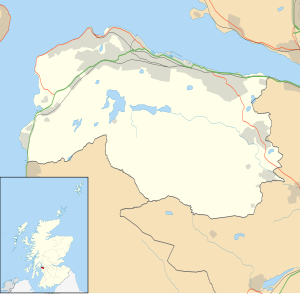The Greenock stowaways, or Arran stowaways, were six boys (Hugh McEwan, 11; John Paul, 12;[i] Peter Currie, 12; Hugh McGinnes, 12; David Brand, 16; James Bryson, 16) and one young man, Bernard Reilly, 22, who, in April 1868, stowed away at Victoria Dock in Greenock, Scotland, on a cargo ship, the Arran, bound for Quebec, Canada.[1] They were dressed in thin and ragged clothing totally unsuitable for the bitterly cold North Atlantic weather encountered on the voyage; two of the boys (John Paul and Hugh McGinnes) lacked any shoes. On board ship they were lashed, beaten, starved, sometimes stripped naked or near-naked, had ice-cold sea water thrown over them, were generally ill-treated and, on occasion, handcuffed. All the stowaways were regularly beaten except Peter Currie, whose father was a friend of first mate James Kerr. James Bryson was subjected to torture.[1]
When, after a little over one month at sea, their vessel became trapped in sea-ice off the west coast of Newfoundland, the captain[ii] ordered that six of them should be put overboard and told to make their way to shore across the ice. The seventh stowaway, Peter Currie, was allowed to remain on board. For the poorly nourished boys in flimsy clothing the trek across the ice was likely to result in their deaths, especially so for the two 12-year-old boys who were forced to walk over the ice in their bare feet. In fact two of the boys, McGinness and McEwan, died on the ice; the remaining four stowaways survived because they were, by chance, spotted by a woman on the shoreline (Catherine Ann Gillis-MacInnis) and rescued by local Newfoundland men. All four were snow-blinded, taking almost a week to fully recover their sight. John Paul, who had to walk on the ice in bare feet, survived the trek, but his badly lacerated feet needed almost a month to heal.[1]
When news of these events reached home, a national scandal resulted. On its return to port, the Arran was met by an angry crowd; the captain of the ship, Robert Watt, and his first mate, James Kerr, had to be escorted off the ship by police. Watt and Kerr were tried in November 1868 at the High Court of Justiciary in Edinburgh, Scotland's highest criminal court. Watt was acquitted of assault, but convicted of culpable homicide and sentenced to 18 months imprisonment; Kerr, who had pleaded guilty to assault, was sentenced to four months, effectively time served.
Watt and Kerr[ii] both returned to the sea after completing their sentences, but never sailed with each other again. David Brand founded a marine engineering company in Queensland, Australia, where he died in 1897. James Bryson became a tram conductor in the United States. Peter Currie, the stowaway who was not put overboard, returned to Scotland on board the Arran, and died of consumption two years later. John Paul married at age 19 and had 12 children. He became a foreman in the Greenock shipyards; after his wife's death he moved to Southampton. Bernard Reilly found work on the railways in Halifax, Nova Scotia.[2]
Cite error: There are <ref group=lower-roman> tags or {{efn-lr}} templates on this page, but the references will not show without a {{reflist|group=lower-roman}} template or {{notelist-lr}} template (see the help page).
- ^ a b c McDermott 2018.
- ^ Donald 1928, p. 62.

